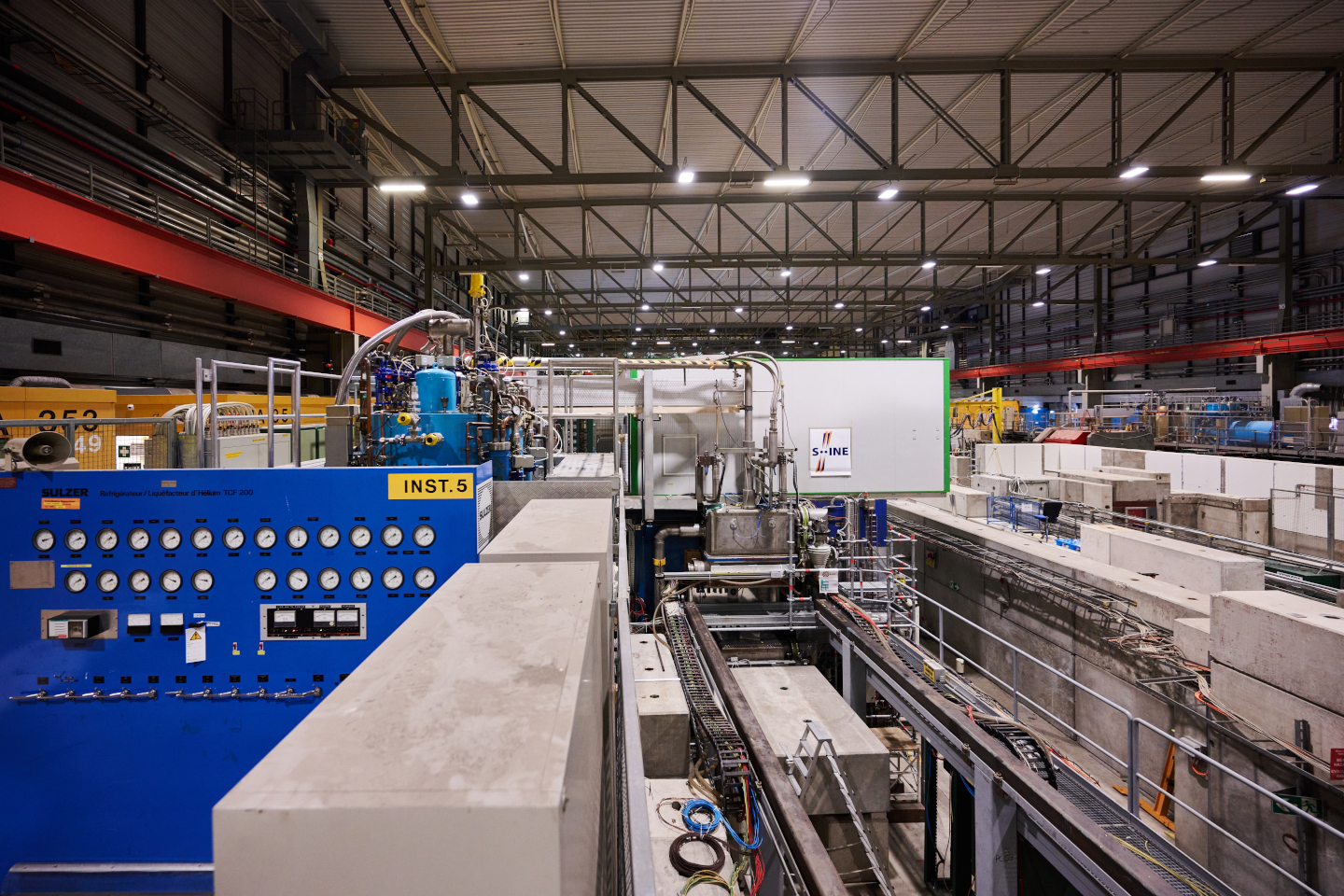At the time of the Big Bang, 13.8 billion years ago, every particle of matter is thought to have been produced together with an antimatter equivalent of opposite electrical charge. But in the present-day Universe, there is much more matter than antimatter. Why this is the case is one of physics’ greatest questions.
The answer may lie, at least partly, in particles called neutrinos, which lack electrical charge, are almost massless and change their identity – or “oscillate” – from one of three types to another as they travel through space. If neutrinos oscillated in a different way to their antimatter equivalents, antineutrinos, they could help explain the matter–antimatter imbalance in the Universe.
Experiments across the world, such as the NOvA experiment in the US, are investigating this possibility, as will next-generation experiments including DUNE. In these long-baseline neutrino-oscillation experiments, a beam of neutrinos is measured after it has travelled a long distance – the long baseline. The experiment is then run with a beam of antineutrinos, and the outcome is compared with that of the neutrino beam to see if the two twin particles oscillate in a similar or different way.
This comparison depends on an estimation of the numbers of neutrinos in the neutrino and antineutrino beams before they travel. These beams are produced by firing beams of protons onto fixed targets. The interactions with the target create other hadrons, which are focused using magnetic “horns” and directed into long tunnels in which they transform into neutrinos and other particles. But in this multi-step process, it isn’t easy to work out the particle content of the resulting beams – including the number of neutrinos they contain – which depends directly on the proton–target interactions.
Enter the NA61 experiment at CERN, also known as SHINE. Using high-energy proton beams from the Super Proton Synchrotron and appropriate targets, the experiment can recreate the relevant proton–target interactions. NA61/SHINE has previously made measurements of electrically charged hadrons that are produced in the interactions and yield neutrinos. These measurements helped improve estimations of the content of neutrino beams used at existing long-baseline experiments.
The NA61/SHINE collaboration has now released new hadron measurements that will help improve these estimations further. This time around, using a proton beam with an energy of 120 GeV and a carbon target, the collaboration measured three kinds of electrically neutral hadrons that decay into neutrino-yielding charged hadrons.
This 120-GeV proton–carbon interaction is used to produce NOvA’s neutrino beam, and it will probably also be used to create DUNE’s beam. Estimations of the numbers of the different neutrino-yielding neutral hadrons that the interaction produces rely on computer simulations, the output of which varies significantly depending on the underlying physics details.
“Up to now, simulations for neutrino experiments that use this interaction have relied on uncertain extrapolations from older measurements with different energies and target nuclei. This new direct measurement of particle production from 120-GeV protons on carbon reduces the need for these extrapolations,” explains NA61/SHINE deputy spokesperson Eric Zimmerman.
_____
Want to find out more about neutrinos? Join CERN, Fermilab and the Sanford Underground Research Facility (SURF) for an interactive livestream on 15 June at 6 p.m. CEST.

